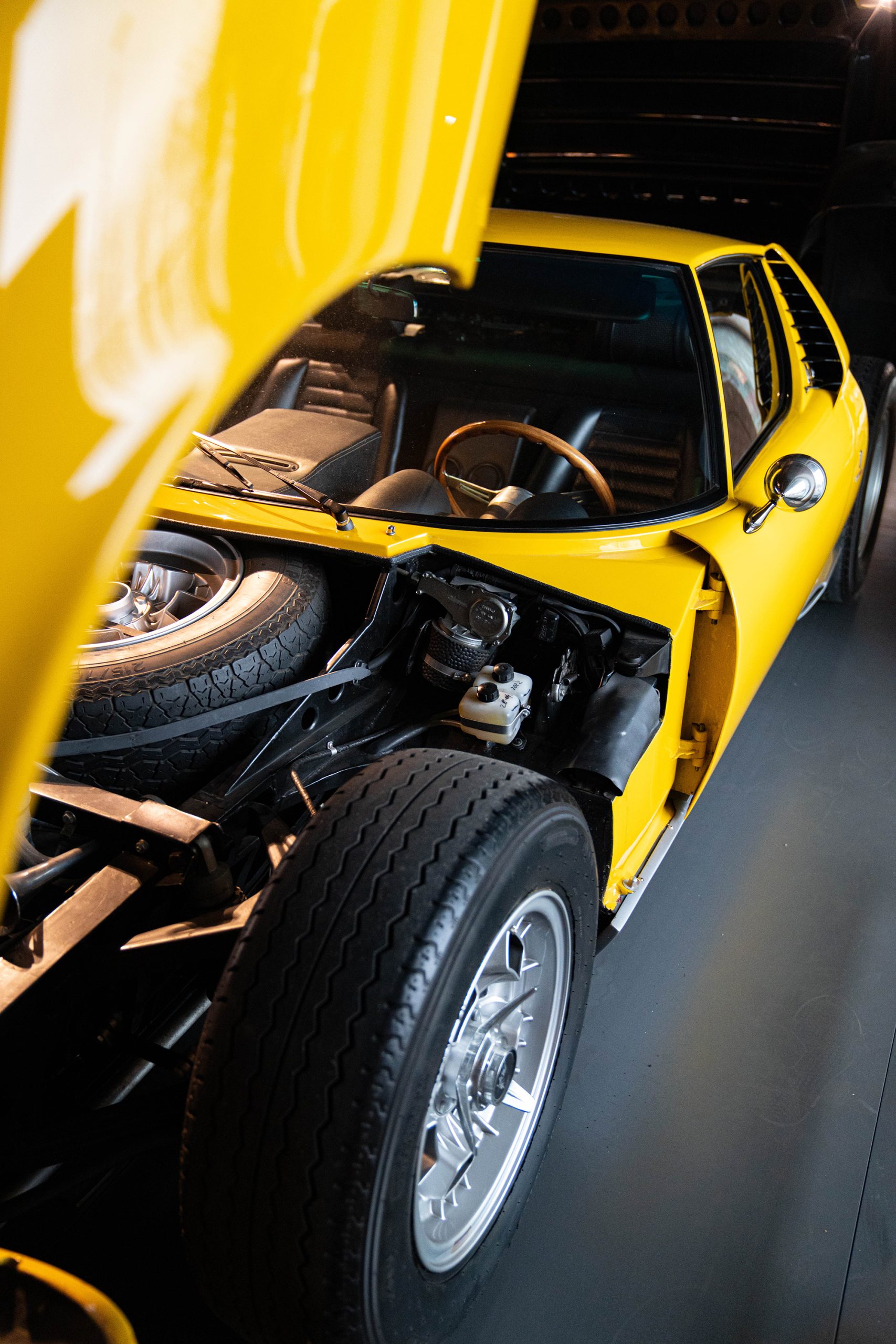The superlative of super sports cars
Very few vehicles have revolutionised the automotive world as much as the Miura, with its centrally installed V12 engine and fascinating body. This two-seater from Lamborghini completely redefined the concept of the sports car. This was reflected not least in the fact that the Miura was the fastest car in the world at the time of its market launch: with a top speed of 280 km/h and acceleration from 0 to 100 km/h in 6.7 seconds, the Lamborghini Miura set new standards in the sports car sector.
The superlative of super sports cars
Very few vehicles have revolutionised the automotive world as much as the Miura, with its centrally installed V12 engine and fascinating body. This two-seater from Lamborghini completely redefined the concept of the sports car. This was reflected not least in the fact that the Miura was the fastest car in the world at the time of its market launch: with a top speed of 280 km/h and acceleration from 0 to 100 km/h in 6.7 seconds, the Lamborghini Miura set new standards in the sports car sector.
The Lamborghini Miura was Lamborghini’s third passenger car model after the 350 GT and the 400 GT. It was produced in Sant’Agata Bolognese from 1966 to 1973. Its successor was the Lamborghini Countach. Equipped with a transversely mounted V12 mid-engine, it was one of the fastest sports cars of its time. The vehicle is named after Antonio Miura, who bought the fighting bull Murciélago and used it for breeding. He started Lamborghini’s tradition of naming models after bullfighters.
Thanks to the revolutionary design and the unmistakable, irresistible “eyelashes”, 475 models of the Miura 350 PS were produced. But its success story goes much further: the Miura was further developed into the Miura S with 370 hp and the Miura SV with wider wings, a significantly improved engine with 385 hp and separate lubrication systems for the engine and gearbox. The Lamborghini Miura was produced from 1966 to 1970. Production of the Miura S lasted from 1968 to 1971, with 140 examples being built. The last vehicle left the production plant in April 1975.





